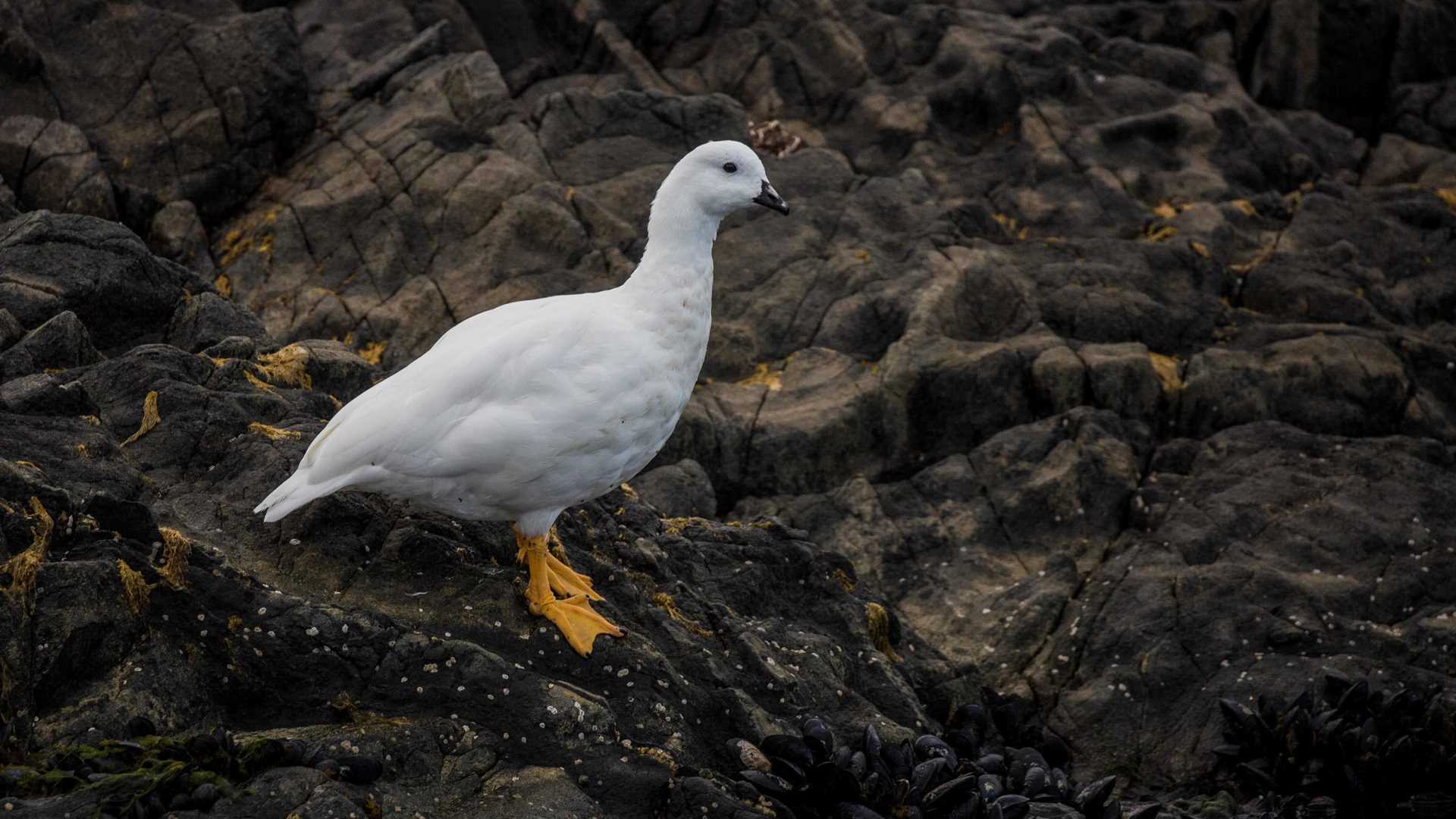Wednesday morning, guests aboard National Geographic Orion woke to a gorgeous, still day in Puerto Profundo, Argentina. This is an exceptionally wild segment of Patagonia, one largely uncharted and untouched by humans.
Zodiac cruises went out for an extended trip. The rugged terrain of this area is a force to be reckoned with. Yet with the patience and skill you’d expect in such environs, our naturalists worked their way through numerous tight channels and narrow waterways till land was reached.
The first wildlife beyond vegetation that was spotted was a Chilean dolphin. Small and rare, these marine mammals are not nearly as common as the more abundant Peale’s dolphins. Chilean dolphins possess a much shorter beak and can at times measure as small as 1.5 meters at full growth. Here the Chilean dolphins can be seen cruising through the rich kelp forests of this area, scanning for a quick and ready meal.
Kelp forests in this part of the world are dominated by a species called giant kelp, or Macrocystis pyrifera. This is the same species that inhabits the west coast of the US, all the way up to Alaska. Though not a “plant” in the conventional sense, giant kelp is capable of rapid photosynthesis, especially during the long summer photo-period. Due to gas-filled bladders strung along the trunk-like stipe, dense kelp can create a dynamic forest-like structures, with different eco-systemic functions on the ocean floor, midwater, and canopy. The kelp forest houses a wide variety of underwater animals, offering habitat and provisions for many juveniles and eggs of various species. The forest-like effect of this habitat develops a food source for the rest of the food web, as top-predators and mid-predators alike use these regions for hunting.
During the early afternoon, National Geographic Orion eased her way to our next destination as guests enjoyed a lovely brisk lunch on deck under a brilliant Patagonia sun. Patagonia isn’t exactly known for its temperate conditions, in what few of those instances there are, so all aboard were truly lucky to see a full day of sun in the southern Chilean fall.
The afternoon presented the ship with another instance of voyage novelty after anchoring in a place she never had before! Zodiac cruisers took to the sea thereafter for a chance at covering untouched territory. A few intrepid explorers even brought their Zodiacs to shore, thus touching down in an area little if any have ever stood upon.









